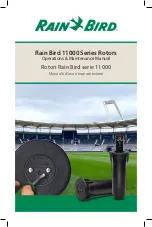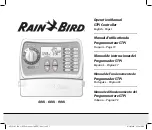
7
Skizze zuzuschneiden. Die Folie ist elektrisch stets an den vormontierten
Kontakten zu kontaktieren.
stallation drawing before it is installed. The pre-assembled contacts must
always be used to establish the necessary electrical contacts.
Allgemeiner Wandaufbau
General wall structure
Folienbeschnitt
Film cutting
Folienaussparungen
Film cutout
(1) Heizungsfolie
(2) Trafo
(3) Regler
(4) Fühler
(1) Heating film
(2) Transformer
(3) Controller
(4) Sensor
3.2 Verlegung
Dieser Abschnitt bezieht sich auf die Verlegung der Folie und des Trafos.
Die Verlegung der Leitungen und der elektrischen Anschlüsse ist im Ab-
schnitt 3.3 Elektrischer Anschluss erklärt. Berücksichtigen Sie die Mindest-
verarbeitungstemperatur von +5°C.
Bei Wänden unterhalb von 2,3 m Höhe und in Decken, die weniger als 45°
zur Senkrechten geneigt sind, sollte die Heizfolie ca. 15 cm kürzer als die
Länge der Montagefläche sein. Die Heizfolie kann bei Bedarf senkrecht zu
den Kupferbahnen einmalig geteilt werden. Beschnitte immer nur von der
unkontaktierten Seite der Heizfolie vornehmen.
Jede andere unsachgemäße Beschädigung der Folie wie z. B. Einrisse
durchscharfe Gegenstände oder Knicke sind zu vermeiden. Bewahren Sie
die Heizfolie deshalb bis zum Einbau im gerollten Zustand in der Verpa-
ckung auf (Mindestbiegeradius beachten, siehe 4. TECHNISCHE DATEN).
Nach erfolgter Verlegung können jedoch Löcher, wie in Abschnitt 2.2
Funktion und Anwendung beschrieben, eingebracht werden.
Warnhinweis:
Beachten Sie, dass Schrauben nur dann in die Heizfläche eingebracht wer-
den dürfen, wenn diese mit Kunststoffdübeln zur elektrischen Isolation
installiert werden. Zusätzlich dürfen zwei Schrauben nicht mit einem
elektrisch leitfähigen Material (z.B. Metallbilderrahmen, Metallzierleiste,
Regalsystem aus Metall) verbunden werden. Verwenden Sie keine Nägel.
3.2.1 Vorbehandlung des Untergrunds
Die Heizfolie kann auf jedem ebenen Untergrund aus anorganischen Ma-
terialien wie Stein, Estrich, Putz, etc. oder organischen Materialien wie
Holz, Kork, PVC, Kunststoff, etc. angebracht werden. Die Unter- und Deck-
schichtmaterialien müssen bis 70 °C temperaturbeständig sein. Im Zweifel
kontaktieren Sie den Hersteller dieser Materialien.
Der Untergrund muss eben und trocken sein. Unregelmäßige Oberflächen
sind zu vermeiden (z.B. sichtbare Holz/Stein - Ausmauerungen). Unter
3.2 Installation
This section relates to installation of the film and the transformer. Instal-
lation of the supply lines and the electrical connections is explained in
Section 3.3 Electrical connection. Note that the minimum processing tem-
perature is +5°C.
When walls are less than 2.3 m high and ceilings slope less than 45°, the
heating film should be about 15 cm shorter than the length of the installa-
tion area. If necessary, the heating film can be divided once at right angles
to the copper conductors. Make sure that cutting is always from the un-
contacted side of the heating film.
All other inappropriate damage to the film, such as tears caused by sharp
objects or kinks, must be avoided. It is therefore important to keep the he-
ating film rolled up in its packaging until it is required for installation (note
the minimum bending radius, see 4. TECHNICAL DATA).
After installation has been completed, holes may, however, be made in the
film, as outlined in Section 2.2 Function and use.
Warning:
Note that screws may only be fitted in the heating surface if they are in-
stalled with plastic plugs for electrical insulation purposes. In addition to
this, two screws may not be connected by a material that conducts electri-
city (e.g. metal picture frames, decorative metal trim, metal shelving sys-
tem). Do not use any nails.
3.2.1 Preparation of the substructure
The heating film can be applied to any flat substructure made from inorga-
nic materials like stone, screed, plaster etc. or organic materials like wood,
cork, PVC, plastic etc. The substrate and top layer materials must resist
temperatures of up to 70°C. Contact the manufacturer of these materials
if you are in any doubt.
The substructure must be flat and dry. Irregular surfaces must be avoided
(e.g. visible wood/stone – brickwork). Under certain circumstances, the
falsch / wrong
richtig / right


































